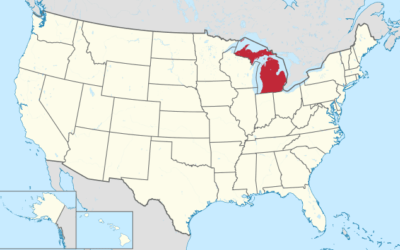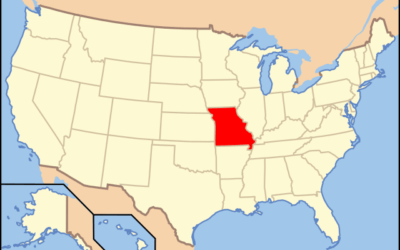Facts on Incarceration in Idaho
Idaho’s incarceration rate is eye-popping, with 720 out of every 100,000 residents behind bars. This places Idaho above all democratic nations globally. Imagine! In a state where over 15,000 people are in prisons, and another 32,700 face probation or parole, the numbers are staggering. The Idaho State Correctional system grapples with overcrowding, highlighting the need for change.
The female incarceration rate stands out, being the fourth-highest in the nation. Programs like the Prison Education Initiative are breaking through bars, offering hope and skills. It’s not just about locking people up. It’s about finding a balance between prisons and compassion. Understanding these dynamics can shed light on the challenges and opportunities within Idaho’s correctional system.

Current Incarceration Statistics in Idaho
Diving into Idaho’s incarceration scene reveals staggering numbers. With an incarceration rate peeking at 720 per 100,000, Idaho tops democratic countries globally. The state correctional center struggles with overcrowding, housing over 15,000 individuals. Meanwhile, Idaho’s broader correctional system accommodates 32,700 on probation or parole. Surprisingly, nearly half of those in local jails haven’t been convicted, highlighting pretrial detention challenges. Efforts like the Prison Education Initiative aim to turn the tide, offering educational opportunities that reduce recidivism. Programs targeting the female incarceration rate show promise, too, as Idaho ranks fourth-highest in the nation. Addressing these issues requires a shift from punitive to rehabilitative approaches. What’s next for Idaho prisons?
Historical Trends: Growth Over Decades
Examining the expansion over past decades, Idaho’s incarceration rates have ballooned significantly. Since 1980, the numbers have jumped by a whopping 849%. Despite initiatives in 2014, like the Justice Reinvestment Initiative, growth hasn’t slowed. Facilities remain packed, straining resources like the state correctional center. Idaho prisons are grappling with these challenges, trying to manage space and people effectively.

The state correctional system not just holds the incarcerated; it extends to probation and parole, impacting many more. The prison education initiative offers a glimmer of hope, aiming to reduce recidivism. Educational programs can be a game changer. Meanwhile, Idaho’s female incarceration rate is notably high, raising concerns about gender-specific issues. Addressing these requires comprehensive policy changes and community support.
Racial Disparities in Idaho Prisons
The Idaho incarceration scene paints a troubling picture of racial inequality. Black and Native American adults face disproportionately high incarceration rates compared to their white counterparts. It’s as if the system has blinders on, ignoring fair treatment. These disparities persist despite many being locked up for nonviolent crimes. The Idaho State Correctional facilities are bursting at the seams, yet solutions seem scarce. One bright spot is the Prison Education Initiative. By offering degrees, it’s like a lifeline for those inside, helping them reintegrate once out. We need more such efforts to tip the scales toward fairness and equality. Change feels slow, but every step counts.

Impact of Prison Education Initiatives
Idaho’s incarceration woes reveal more than just numbers. Efforts to integrate educational programs within Idaho’s correctional system have shown promise. By providing degrees and skills, these programs aim to lower reoffending rates. This approach isn’t merely about learning; it’s a beacon of hope for inmates looking to turn a new leaf. Female incarceration rates in Idaho, among the nation’s top, require targeted interventions. These initiatives might just be the key to unlocking potential and reducing recidivism. Offering education as a tool for reintegration transforms lives and communities. Through education, inmates gain confidence, skills, and aspirations. As a result, society benefits from their successful reintegration, creating a ripple effect of positive change.

Idaho’s Correctional System Beyond Prisons
The correctional framework in Idaho extends far beyond just prison walls. Thousands are on probation or parole, affecting their daily lives. This isn’t merely about confinement; it’s a cycle impacting communities. In fact, with 27,000 annual jail bookings, Idaho’s system functions more like a revolving door. Folks often find themselves caught in this loop for minor offenses.
Pretrial detention remains a glaring issue, too. Nearly half of those in local jails are yet to be convicted. It’s a situation that screams for reform. Imagine waiting months for trial, your life on hold. We need smarter approaches, ones that focus on rehabilitation and community solutions. Reducing recidivism should be the priority, not just locking people away.
Exploring the High Female Incarceration Rate
Idaho’s high female incarceration figures are alarming, with rates more than double the national average. It’s like a revolving door, influenced by mental illness, substance abuse, and past trauma. Women often end up behind bars for behaviors linked to these challenges. Imagine the stress they face, unable to escape this cycle. Advocacy for reform is strong, with calls for policy changes. There’s a push towards rehabilitation and alternatives rather than locking folks away. Initiatives focusing on diversion could make a real difference. Addressing these root causes is crucial for improving lives and easing the strain on Idaho’s overburdened system. With the Idaho incarceration rates rising, there’s no time to lose.





0 Comments